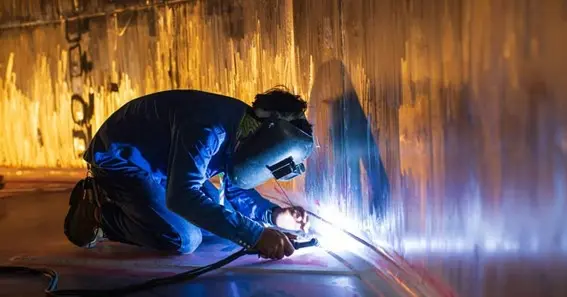The world of welding is vast and complex, often leaving beginners and even some seasoned professionals feeling a tad overwhelmed. One element of this multifaceted craft that plays a pivotal role in the outcome of a welding project is mig shielding gas. Without a clear understanding of its importance and its proper usage, the welding process can fall short of perfection.
Understanding the Role of Shielding Gases
When one delves into the realm of Metal Inert Gas (MIG) welding, they’ll soon encounter the significance of gases in the process. These gases aren’t just arbitrary choices; they influence the stability of the welding arc, the appearance of the weld, and its overall quality. Essentially, they shield the weld pool from contaminants present in the atmosphere, such as oxygen and nitrogen. Beyond protecting the weld pool, these gases also ensure that the heat transfer to the weld is consistent, allowing for a more stable process. In some cases, the choice of shielding gas can also influence the mechanical properties of the weld, making the selection even more crucial. Many welders experiment with different gas compositions to achieve specific weld characteristics, highlighting the versatility of MIG welding.
Also Read N: Styling Tips and Tricks with the Frankie4 Jackie 3
The Different Types of Gases Used
While the term often denotes a singular entity, there are actually various gases or gas mixtures one might use in MIG welding. Common options include argon, carbon dioxide, and helium, to name a few. The choice of gas often depends on the specific metal being welded and the desired characteristics of the finished weld. Each gas or gas mixture has its own unique properties, affecting the weld bead’s appearance, penetration, and other critical aspects. For instance, argon tends to provide a smoother weld bead, whereas carbon dioxide can lead to deeper penetration but with a rougher bead surface. The decision often balances the welder’s preferences, material requirements, and cost considerations.
Also Read P: Trade Indices Online Like a Pro: Essential Strategies for Success
Factors Determining the Right Gas Choice
Selecting the right shielding substance is not as simple as picking a bottle off a shelf. Welders must consider factors such as material thickness, welding position, and desired weld penetration. For example, while one gas might be ideal for surface-level welding, another might be better suited for deeper penetration. The welding speed can also influence the choice, as certain gases may work better for faster or slower-paced welding. External conditions, like whether welding is being done indoors or outdoors, can also play a role, as some gases might be more susceptible to wind and require additional considerations. Ultimately, the choice requires a combination of knowledge, experience, and sometimes even a bit of trial and error.
Steps to Optimise Your Welding Outcomes
For those looking to ensure the best possible welding outcomes, the following steps are recommended:
- Research Before Welding: Before beginning a project, research the ideal shielding substance for the given material and desired outcome.
- Monitor Flow Rates: Ensure the flow rate is set correctly for the task at hand. Too much or too little can negatively impact the weld.
- Regular Equipment Checks: Regularly inspect hoses, regulators, and tanks for any potential issues or leaks. Ensuring your equipment is in top condition is vital for consistent results. Moreover, a small leak or equipment malfunction can lead to a wastage of shielding gas, increasing operational costs. By establishing a routine check, you also ensure the safety of the welding environment.
Conclusion
Starting a welding project armed with a clear understanding of mig shielding gas can significantly enhance the outcome. As the backbone of MIG welding, giving it the attention it deserves ensures not only a quality weld but also the satisfaction of a job well done. Harnessing the nuances of this vital component means embracing the delicate balance of art and science that defines the world of welding. As technology and techniques continue to evolve, staying updated with the latest in protective gases becomes pivotal for every welder aspiring to perfect their craft.










